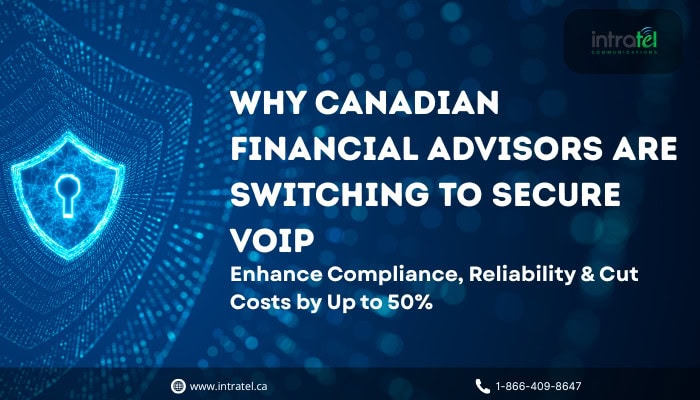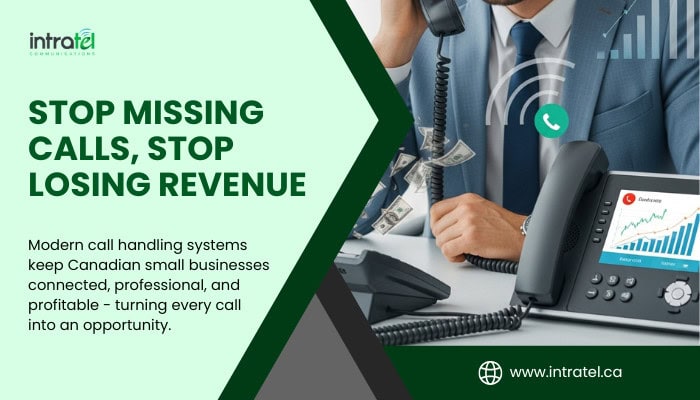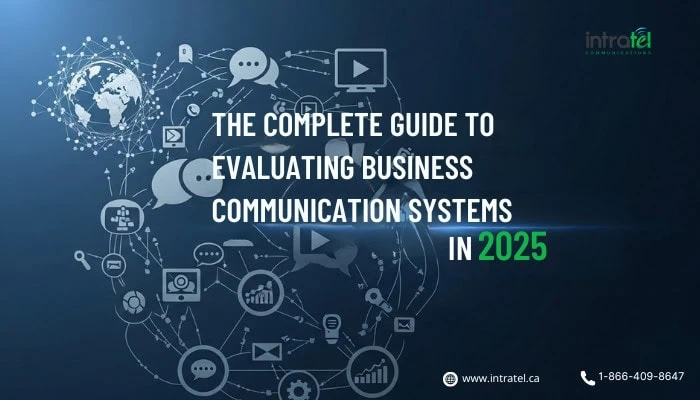Financial institutions manage sensitive client information during every conversation, so dependable communication systems are essential. Canada-hosted VoIP infrastructure helps maintain client confidence by supporting consistent record retention and keeping call data within national borders.
Older phone systems often struggle with outdated technology, limited features, and inconsistent call quality. Modern cloud-based hosted PBX solutions resolve these issues by offering reliable performance, clear audio, and flexible tools designed to support the operational needs of financial services firms.
Many financial advisors across Ontario are moving to hosted PBX because it supports detailed call documentation, improves day-to-day reliability, and reduces ongoing telecommunications costs.
📋 Understanding Communication Challenges Unique to Financial Services
Record-Keeping and Canadian Data Residency Needs
Canadian financial institutions are responsible for maintaining accurate records of all client interactions. Many traditional phone systems do not offer integrated call recording, often leaving firms with disorganized or incomplete documentation spread across multiple tools.
The Canadian Investment Regulatory Organization (CIRO), which oversees investment dealers and mutual fund dealers nationwide, requires firms to maintain detailed communication records. A hosted PBX system can support these record-keeping needs by providing consistent call documentation without relying on separate hardware or manual processes.
Hosted PBX systems built on 100% Canadian infrastructure keep all call data, recordings, and communications within Canadian borders. This avoids cross-border data routing issues and aligns with provincial and federal expectations around Canadian data residency.
Advisors using cloud-based phone systems can quickly retrieve call recordings, complete with timestamps and organized storage, helping them maintain clear records for internal reviews or client follow-ups. Older systems often require manual searching through physical media or fragmented archives, making retrieval far less efficient.
The Cost of System Downtime During Critical Market Hours
Traditional phone systems often lack geographic redundancy and automated failover options, which can create single points of failure. When equipment malfunctions or regional outages occur, firms using outdated systems may experience complete communication interruptions at the worst possible times.
Premium quality-focused service providers now offer 99.99% uptime as a baseline standard. This level of reliability matters significantly during market trading hours when client accessibility directly impacts business outcomes.
Multi-location financial services organizations also benefit from cloud-based routing that connects offices across different regions. Hosted PBX systems allow calls to be directed smoothly between locations, helping clients reach the appropriate advisor regardless of which branch they contact.
Essential VoIP Features That Strengthen Financial Services Operations
Call Recording and Documentation
Comprehensive call recording with flexible long-term storage options enables financial institutions to maintain complete records of client interactions. This supports dispute resolution, training quality assurance, and record-keeping expectations outlined by CIRO.
Automatic recording systems capture all inbound and outbound calls with timestamp documentation and easy retrieval capabilities. When a client disputes a conversation about investment recommendations, advisors can access the exact recording within minutes rather than searching through physical storage systems.
Canadian data centre hosting keeps recordings within Canada and supports organized retrieval when needed.
Client Relationship Management through Professional Call Handling
Auto-attendant systems with customized professional greetings help financial firms present a consistent, polished image from the first point of contact. A well-structured call flow supports advisor accessibility and contributes to a smoother overall client experience.
Intelligent call routing can direct callers to the appropriate advisor or department based on their needs. For example, an individual seeking retirement planning guidance can be routed directly to the right specialist, while tax-related enquiries reach the advisor best equipped to assist.
Voicemail-to-email with transcription ensures messages are never missed. Advisors receive both the audio file and a written transcript, allowing them to quickly determine urgency and stay responsive during meetings or while travelling. This helps maintain strong client communication throughout the business day.
Communication Tools for Sensitive Client Discussions
Financial services firms benefit from communication options that help maintain consistent and reliable conversations across different offices. Private connectivity options can reduce reliance on public internet pathways, supporting more stable performance for advisors who handle time-sensitive client enquiries.
Multiple Canadian data centres with geographic redundancy help ensure continuity during regional disruptions. Automatic failover capabilities mean calls can continue to operate reliably without manual intervention, even if one location experiences technical difficulties.
Advanced call management features, including three-way calling and conferencing features, enable collaboration between financial advisors, clients, and specialists. A financial advisor can bring a tax specialist into a client’s conversation instantly, providing comprehensive guidance while keeping conversations smooth and uninterrupted.
💰 Cost Optimization without Compromising Security or Reliability
The True Cost of Traditional Phone Systems
Financial services organizations relying on traditional phone systems often face higher recurring costs, especially once additional features such as call recording or multi-location support are added. Older phone systems also require upfront hardware purchases and ongoing maintenance, which can limit flexibility as the firm grows or restructures.
These fixed expenses can become even more restrictive for firms that operate across multiple regions. Long-distance charges and location-to-location calling often add unnecessary monthly costs, particularly for advisors who work with clients throughout Canada. Hosted PBX helps reduce these expenses by eliminating reliance on outdated infrastructure and simplifying communication across all offices.
Achieving Cost Reduction While Enhancing Capabilities
Cloud-based hosted PBX systems for financial services are available at competitive monthly rates per user and include many features that traditional phone systems charge extra for. Firms often reduce their telecommunications costs by up to 50 per cent compared to legacy solutions, while gaining more reliable performance and clearer call quality.
Hosted PBX also removes the need for ongoing hardware maintenance and provides automatic system updates, helping reduce the IT workload associated with older systems. Scalable pricing options allow firms to add or remove users as needed, making it easier to adapt to growth or seasonal changes without long-term commitments.
For financial advisors who operate across multiple offices or support remote teams, the combination of predictable monthly pricing and reduced infrastructure requirements can lead to significant long-term savings.
📞 Selecting the Right Canadian VoIP Provider for Financial Services
Working with a Canadian-owned provider ensures local expertise and support that aligns with the needs of financial firms across Canada.
Essential Evaluation Criteria Beyond Price
Premium quality–focused providers offer 99.99 per cent uptime, giving advisors dependable availability throughout the business day.
Long-Term Partnership Considerations
Flexible contract options give financial services firms the ability to adjust their communication systems as business needs evolve. This helps reduce concerns about unnecessary fees during periods of restructuring or organizational change.
Scalability supports growth from small advisory firms to larger financial institutions. A two-advisor firm planning growth to ten advisors within three years needs systems that scale seamlessly.
Ongoing platform enhancements and automatic system updates ensure firms continue to benefit from the latest communication capabilities without extra costs. With Canadian-based support teams, advisors receive assistance from specialists who understand regional business practices and the needs of firms operating across Canada.
🚀 Why Financial Services Firms Should Act Now
Remote work has changed how many financial services teams operate, increasing the need for phone systems that support communication across office locations, home offices, and mobile devices. Firms now depend on tools that allow advisors to stay connected regardless of where they are working.
Many traditional PBX systems installed more than a decade ago are now reaching end of life, with some manufacturers discontinuing support. As replacement hardware becomes costly, businesses often find that modern hosted PBX solutions offer a more affordable and flexible alternative to maintaining older equipment.
Industry expectations around record-keeping and accessible documentation continue to evolve. Financial services firms that modernize their communication systems now are better positioned to maintain organized records and adapt to changing operational needs without facing last-minute technology upgrades.
💼 Transform Your Financial Services Communication with Intratel
Ready to explore how Canada-hosted VoIP solutions can strengthen your client relationships while reducing communication costs by up to 50%? Contact Intratel Communications today at 1-866-409-VoIP (8647) to learn more about our hosted PBX solutions designed specifically for Canadian financial services firms.
Our team provides comprehensive assessment of your current communication infrastructure, migration planning, and ongoing support. With 99.99% network uptime, 100% Canadian infrastructure, and advanced features including call recording, and voicemail transcription, you can confidently serve clients whilst supporting the communication and record-keeping needs of financial firms.
Serving financial services firms across Burlington, Hamilton, Oakville, Mississauga, Brampton, Toronto, and throughout Canada.








